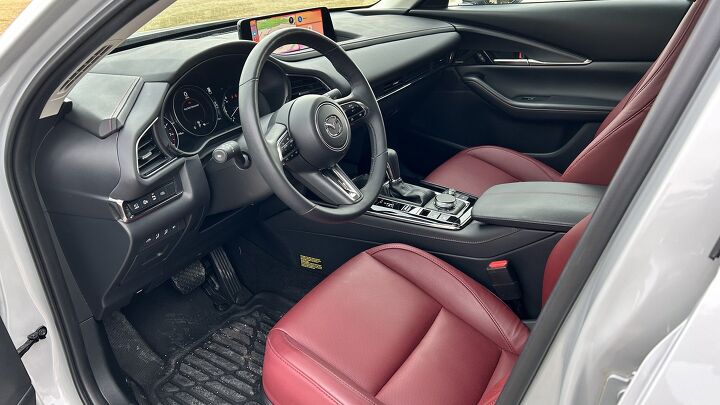Why the CX-30 (Mostly) Helps Mazda’s March Upmarket

Mazda stated a few years ago the brand's ambitions of moving upmarket. Maybe not quite ready to go up against the likes of BMW, Mercedes-Benz, and Cadillac just yet, the Japanese manufacturer had initial sights on premium automakers like Volvo, Acura, and Infiniti.
One of the first models released towards this goal was the Mazda CX-30. Now on the market for four years, the question is, has it worked? Has this small SUV elevated the brand’s status with customers? That ultimately depends on individual perceptions, but in our minds, it has – mostly.
Below we break down why.
The Exterior Style
As always, beauty is ultimately in the eye of the beholder. Everyone has differing opinions of what is appealing, but we find it hard to argue that the CX-30 isn’t a pleasing design. Although it’s an evolution of previous Mazda design language, with the CX-30, the brand has found an easily identifiable identity – an important characteristic for a premium automaker.
The same basic look is transferred to the CX-50 while the CX-70 and CX-90 wear the next iteration of the theme.
Swanky Interior
Mazda interiors weren’t exactly plastic-filled penalty boxes prior to the CX-30’s launch. The brand has a long history of making some of the better mainstream cabins. With the new CX-line of SUVs, things are steadily getting more and more posh.
The materials used, especially up front, are as good on the eyes as they are to touch. The overall layout is elegant and resembles some luxury cabins. Not all the controls are top notch, but the splash of color and contrasting elements help complete the look.
The Optional Turbo Engine
When the CX-30 first came out, it shook up the small SUV class that resides between subcompact and compact in size. Unlike virtually everyone else, Mazda included an optional 250 hp engine that includes a ton of torque. No other competitor in the mainstream segment offers such power, showing the brand’s aspiration to move upmarket.
It better matches the CX-30 up against vehicles like the Infiniti QX50, Lexus NX 350, and Volvo XC40 B5.
It’s Not All Perfect
As many gains as Mazda has made, the CX-30 still does have room for improvement. Even in this small class, the CX-30 still feels more cramped, especially in the rear seats, than other offerings on the market. While on the topic of the rear seats, passengers back there aren’t offered as nice materials as those up front, notable with the door finishes.
Other minor complaints include the infotainment system software which is not one of the better ones on the market. As well, the six-speed automatic could use a few more gears to better utilize the turbocharged engine.
Become an AutoGuide insider. Get the latest from the automotive world first by subscribing to our newsletter here.

A 20+ year industry veteran, Mike rejoins the AutoGuide team as the Managing Editor. He started his career at a young age working at dealerships, car rentals, and used car advertisers. He then found his true passion, automotive writing. After contributing to multiple websites for several years, he spent the next six years working at the head office of an automotive OEM, before returning back to the field he loves. He is a member of the Automobile Journalists Association of Canada (AJAC), and Midwest Automotive Media Association (MAMA). He's the recipient of a feature writing of the year award and multiple video of the year awards.
More by Mike Schlee




































Comments
Join the conversation